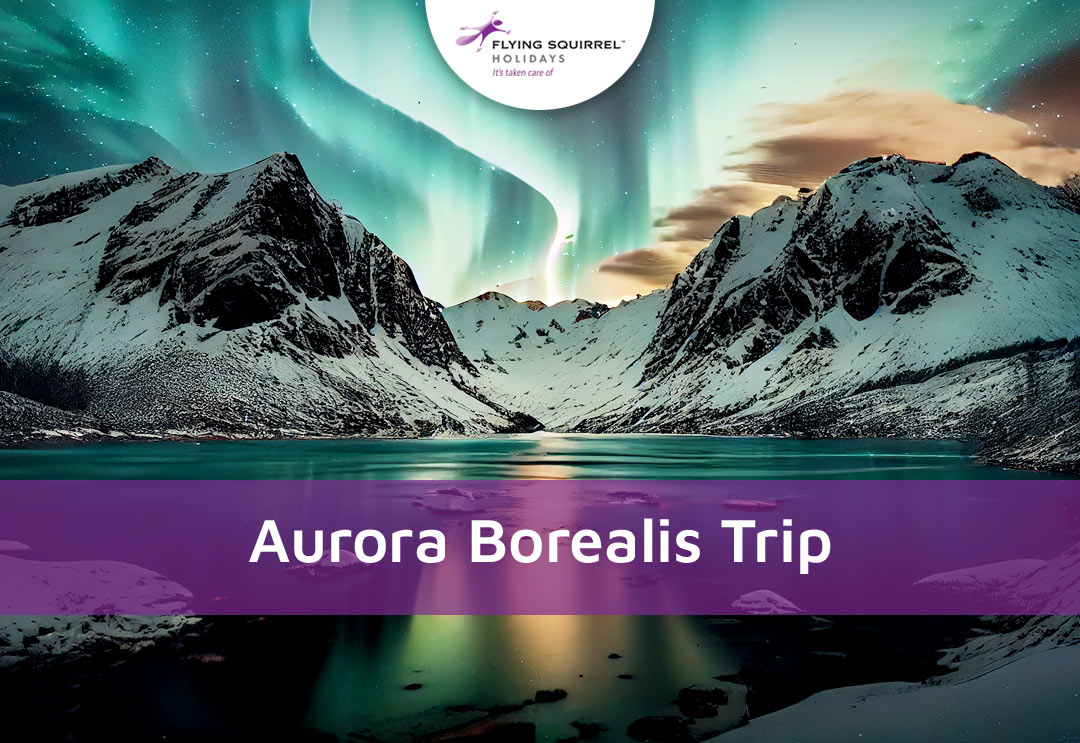
Aurora Borealis Trip: Best Places, Travel Tips & Best Time to See the Northern Lights
Posted on By Flying Squirrel Holidays
Imagine standing under a vast, dark sky as vibrant green, purple, and pink lights dance above you in a celestial display. Witnessing the Aurora Borealis, or Northern Lights, is one of Earth’s most breathtaking natural phenomena. This awe-inspiring experience is on many travellers’ bucket lists, but planning is essential to increase your chances of seeing this elusive wonder.
In this guide, we’ll cover:
- What is the Aurora Borealis
- Best Conditions for Viewing
- Best time to see the Northern Lights
- Best Places to see the Aurora Borealis
- Essential Travel Tips
What is the Aurora Borealis?
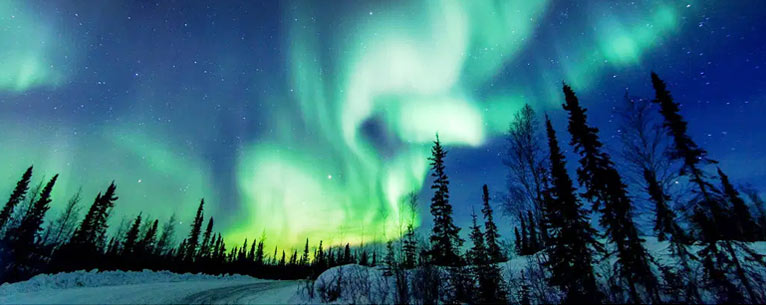
The Aurora Borealis, commonly known as the Northern Lights, is one of nature’s most captivating and awe-inspiring phenomena. This natural light display occurs when charged particles from the sun interact with the Earth’s magnetic field and atmosphere, producing glowing waves and curtains of color across the night sky, particularly near the polar regions.
The science behind it
The aurora begins with activity on the sun, such as solar flares or coronal mass ejections (CMEs). These events release streams of charged particles, known as the solar wind.
As the solar wind approaches Earth, the planet’s magnetic field directs these particles toward the polar regions, where the magnetic force is strongest. Upon entering the upper atmosphere—typically between 80 and 300 kilometres above the Earth’s surface—the particles collide with gas molecules, primarily oxygen and nitrogen.
These collisions energize the gas molecules, which then release that energy in the form of visible light. This glowing light is what we observe as the Aurora Borealis in the Northern Hemisphere (and the Aurora Australis in the Southern Hemisphere).
Aurora colors and their causes
The colors seen in the aurora depend on several factors, including the type of atmospheric gas involved, the altitude of the collision, and the energy level of the solar particles. Each gas emits light at specific wavelengths, resulting in the variety of colors seen in auroral displays.
Green – Most Common
- Cause: Oxygen molecules
- Altitude: Around 100 to 150 kilometers above the Earth
- Details: Green is the most frequently observed color in auroras. It results from collisions with oxygen at lower altitudes and often forms the classic auroral arcs and waving ribbons.
Red – Rare and High Altitude
- Cause: Oxygen molecules
- Altitude: Above 200 kilometers
- Details: Red auroras are much rarer and occur when high-energy particles interact with oxygen at greater altitudes. These can appear as faint red glows or vivid streaks above green auroras.
Purple and Violet – Less Common
- Cause: Nitrogen molecules and ions
- Altitude: Around 80 to 100 kilometers
- Details: These colors are created by nitrogen and are usually seen at the lower edges of green auroras or in fast-moving bursts. They are less common but often appear during intense auroral activity.
Blue – Rare and Low Altitude
- Cause: Ionized nitrogen
- Altitude: Below 100 kilometers
- Details: Blue is among the rarest auroral colors. It typically appears under very strong solar storms and is often visible only during particularly active nights.
Why are Auroras seen near the Poles?
The Earth’s magnetic field channels solar particles toward the magnetic poles, concentrating auroral activity in regions around the Arctic and Antarctic. This results in auroras primarily occurring within the Auroral Oval, a ring-shaped area around each pole.
This is why high-latitude destinations such as Alaska, Northern Canada, Iceland, Norway, Sweden, Finland, and Russia are ideal locations for viewing the Northern Lights.
Interesting Facts
- The name Aurora Borealis combines “Aurora,” the Roman goddess of the dawn, and “Borealis,” meaning “northern” in Latin.
- The Aurora Australis is the Southern Hemisphere counterpart, visible in places like Antarctica, southern New Zealand, and Tasmania.
- Auroras are visible only in dark skies, usually far from city lights and during the winter months when nights are longer.
- Cameras using long-exposure photography can often capture the lights more vividly, even if they appear faint to the naked eye.
- Geomagnetic storms caused by strong solar activity can push the aurora further south, making it visible in lower-latitude locations like Scotland, parts of the northern United States, or central Europe.
Best Conditions for Viewing
Witnessing the magical dance of the Northern Lights—also known as the Aurora Borealis—is a surreal experience, often ranking high on travel bucket lists. Caused by the interaction between solar particles and Earth’s magnetic field, these vivid displays of green, pink, and violet light require more than just luck. To truly maximize your chances of seeing the aurora, consider these key conditions:
Choose High-Latitude Locations within the Auroral Oval
The Northern Lights are most visible in areas close to the Earth’s magnetic poles, particularly within a band known as the Auroral Oval. Traveling to destinations located within or near this zone greatly enhances your chances of a successful sighting.
Both Finland and Russia’s far north are rising stars for aurora tourism, offering pristine wilderness settings, cozy glass igloos, and authentic Arctic culture.
Seek Dark, Clear Skies with Minimal Light Pollution
To view the aurora at its most vivid, escape the artificial glow of cities and head to remote, light-free zones. Dark-sky areas far from urban centers are essential. Mountain ranges, Arctic plateaus, and national parks are great choices. Elevated locations may offer clearer skies and broader horizons for aurora watching.
Visit During the Optimal Aurora Season (September to April)
Auroras occur year-round, but they are only visible during hours of darkness. Winter months in the Arctic and sub-Arctic regions provide long, uninterrupted nights—ideal for aurora sightings.
Late September to early April are the best viewing months. Between 10 PM and 2 AM, though activity can occur outside this window. Winter landscapes, snow-covered forests, and frozen lakes add a magical backdrop to your aurora hunt.
Monitor Solar Activity and Use Aurora Forecast Tools
The Northern Lights are driven by solar storms and geomagnetic activity. Strong solar winds lead to more vibrant and widespread auroras.
Useful forecasting tools include: NOAA Aurora Forecast (North America-focused), Aurora Forecast App (global KP index tracking), My Aurora Forecast & Alerts, AuroraWatch UK (for Europe).
A KP index of 4 or higher indicates favorable conditions for aurora viewing, especially at higher latitudes.
Avoid Full Moon Nights
While a full moon may illuminate winter landscapes beautifully, it can also overpower the auroras, making them less visible.
Best time is around the new moon, or during a waning crescent. Many aurora forecast apps include lunar phase tracking to help plan accordingly.
By aligning your travel plans with these conditions, you dramatically improve your odds of witnessing one of nature’s most stunning light shows—an unforgettable highlight of Arctic exploration.
Want to chase the Northern Lights? Our experts know where and when.
Best Time to See the Northern Lights
The best time to see the Aurora Borealis is September to April, with peak visibility during December to February when nights are the longest.
| Month | Visibility | Night Length | Weather Conditions |
| September | Moderate | Medium | Cool, some rain |
| October | Good | Longer | Chilly, occasional rain |
| November | Excellent | Very Long | Cold, snow begins |
| December | Peak | Longest | Cold, clear skies |
| January | Peak | Longest | Freezing, clear skies |
| February | Peak | Long | Cold, dry air |
| March | Excellent | Shorter | Cool, clearer skies |
| April | Good | Short | Warmer, less frequent auroras |
Best Places to See the Northern Lights
Experiencing the Aurora Borealis is a dream for many travelers, but choosing the right destination is key to making it a reality. The best places to see the Northern Lights are located in the Auroral Oval, an area around the Earth’s magnetic poles where auroral activity is most frequent. Here are the top destinations to witness this spectacular natural phenomenon:
Tromsø, Norway
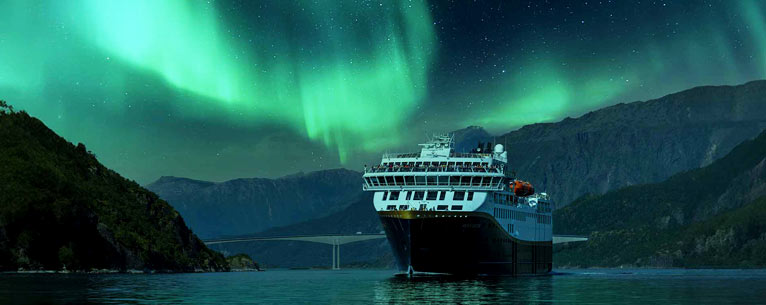
- Best Months: September to March
- Why Visit: Situated in the heart of the Auroral Oval, Tromsø is considered one of the best places on Earth for consistent and intense aurora sightings.
Best Viewing Spots:
- Ersfjordbotn – A quiet fjord with minimal light pollution
- Sommarøy Island – A beautiful coastal village with sweeping views
- Tromsø Bridge – A central, accessible spot with picturesque angles
Activities:
- Aurora fjord cruises – See the lights shimmering over Arctic waters
- Dog sledging and snowmobiling – Explore the snow-covered tundra
- Sami cultural tours – Learn traditional Arctic ways of life and herding
Unique Experience:
Stay in a glass-roofed igloo or a cozy Arctic cabin tucked away from light pollution, offering 360° aurora views right from your bed.
Reykjavik, Iceland
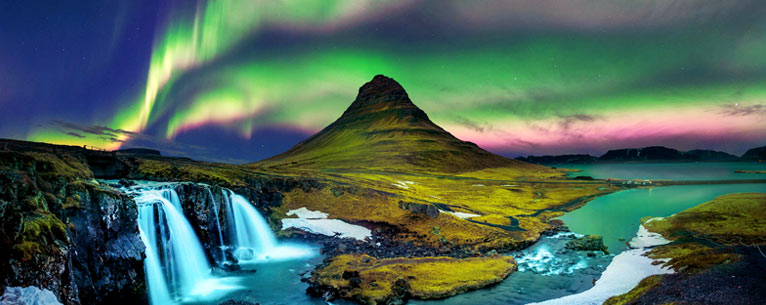
- Best Months: September to April
- Why Visit: Iceland combines easy accessibility with surreal volcanic landscapes, making it a dream setting for Northern Lights photography and nature lovers.
Best Viewing Spots:
- Thingvellir National Park – A UNESCO World Heritage Site with wide, open skies
- Kirkjufell Mountain – One of Iceland’s most photographed landmarks
- Grotta Lighthouse – Just outside Reykjavik, ideal for quick escapes from city lights
Activities:
- Hot spring baths – Watch auroras while soaking in the Blue Lagoon or Sky Lagoon
- Golden Circle tours – Combine geysers, waterfalls, and geothermal wonders
- Glacier hiking and ice cave tours – Adventure across Iceland’s wild interior
Unique Experience:
Join a Northern Lights boat tour in Faxaflói Bay for a tranquil night at sea beneath dancing auroras.
Abisko, Sweden
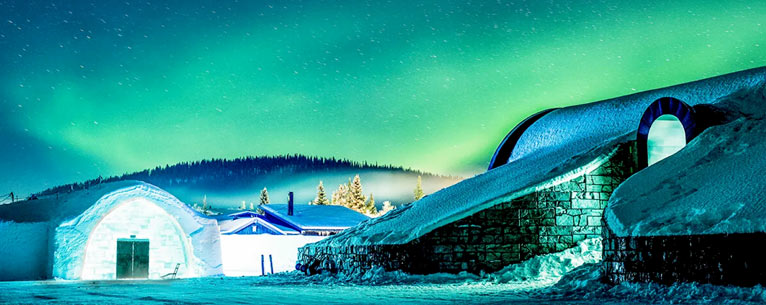
- Best Months: November to March
- Why Visit: Abisko boasts some of the clearest skies in the Arctic, thanks to its microclimate, and is home to the world-famous Aurora Sky Station.
Best Viewing Spots:
- Aurora Sky Station (Mount Nuolja) – Offers guided aurora experiences above the clouds
Activities:
- Snowshoeing and cross-country skiing through Arctic wilderness
- Photography workshops led by expert aurora hunters
- Reindeer sledging and traditional Sami dining experiences
Unique Experience:
Stay at the Icehotel in Jukkasjärvi, crafted entirely from ice and snow each winter, with aurora wake-up calls.
Fairbanks, Alaska, USA

- Best Months: August to April
- Why Visit: Located under the Auroral Oval with frequent activity, Fairbanks offers dark skies, thermal hot springs, and remote wilderness—all perfect for viewing the lights.
Best Viewing Spots:
- Murphy Dome – A panoramic viewpoint with high elevation
- Chena Hot Springs Resort – Watch auroras while relaxing in naturally heated pools
- Denali National Park – Vast, untouched wilderness with ideal viewing conditions
Activities:
- Fly-in Aurora tours to remote cabins or Arctic villages
- Dog sledging, ice fishing, and wildlife safaris
- Arctic Circle tours crossing into the far north for increased chances
Unique Experience:
Take a small-plane aurora flight for an unforgettable aerial view of the dancing lights from above the clouds.
Yellowknife, Canada
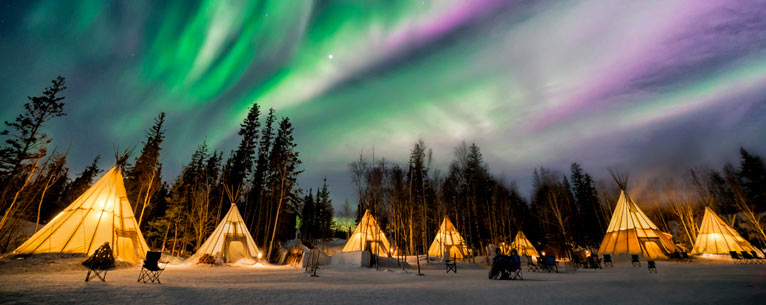
- Best Months: Mid-August to April
- Why Visit: Nicknamed Canada’s Aurora Capital, Yellowknife offers exceptional aurora activity, low humidity, and crystal-clear skies for most of the season.
Best Viewing Spots:
- Aurora Village – With heated outdoor seating and teepees for warmth and comfort
- Prelude Lake Territorial Park – Offers perfect water reflections for photos
- Cameron Falls Trail – A short winter hike to a scenic and peaceful viewing spot
Activities:
- Winter camping and teepee stays under the stars
- Dog sledging, snowshoeing, and ice road adventures
- Dene cultural experiences with drumming, storytelling, and fire ceremonies
Unique Experience:
Sleep in a heated glass aurora dome or traditional teepee at Aurora Village for an immersive blend of comfort and culture.
Rovaniemi & Finnish Lapland, Finland
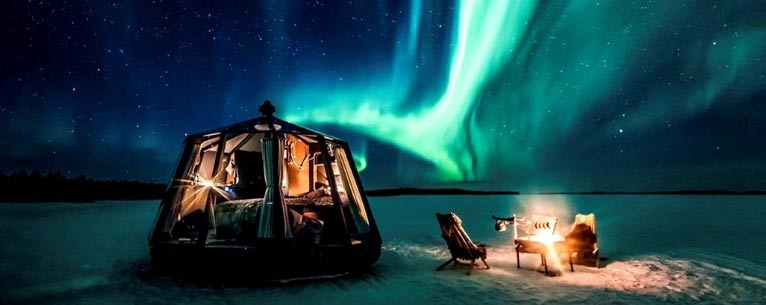
- Best Months: Late August to early April
- Why Visit: Finnish Lapland offers pristine snow-covered forests, minimal light pollution, and a strong aurora presence. It’s also the official hometown of Santa Claus, adding a fairytale charm.
Best Viewing Spots:
- Levi – A peaceful ski resort town ideal for winter activities and aurora watching
- Saariselkä – Surrounded by wilderness, perfect for a remote escape
- Luosto and Pyhä – Smaller resorts known for their rustic charm and good visibility
Activities:
- Reindeer sleigh rides and husky safaris through snowy forests
- Snow hotel visits and glass igloo stays
- Northern Lights snowshoeing and snowmobile excursions
Unique Experience:
Stay in a glass igloo at Kakslauttanen Arctic Resort, where you can lie back in warmth and watch the aurora swirl overhead all night long.
Murmansk & Kola Peninsula, Russia
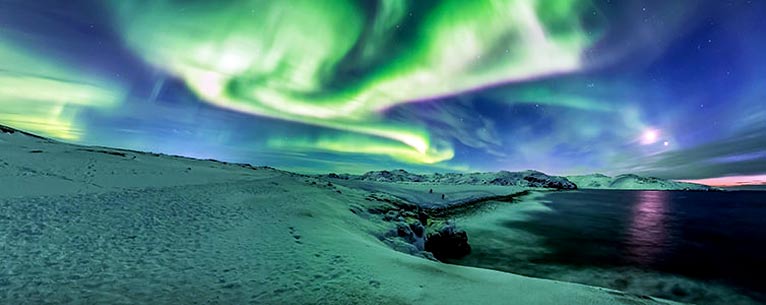
- Best Months: September to April
- Why Visit: One of the northernmost cities in Russia, Murmansk lies above the Arctic Circle and is a gateway to the Kola Peninsula, offering some of the least crowded aurora experiences in Europe.
Best Viewing Spots:
- Lovozero Village – A remote and authentic Sami settlement
- Khibiny Mountains – Great for high-altitude aurora observation
- Teriberka – A stunning Arctic coastline with hauntingly beautiful landscapes
Activities:
- Northern Lights hunting tours with local guides
- Snowmobiling, ice fishing, and Arctic trekking
- Cultural tours with Russian and Sami heritage
Unique Experience:
Experience the aurora in extreme solitude—away from commercial tourism—combined with raw 6Arctic wilderness, Soviet-era charm, and deep indigenous traditions.
Reimagine winter travel. Let’s curate your custom Northern Lights journey.
Essential Travel Tips for an Aurora Borealis Trip
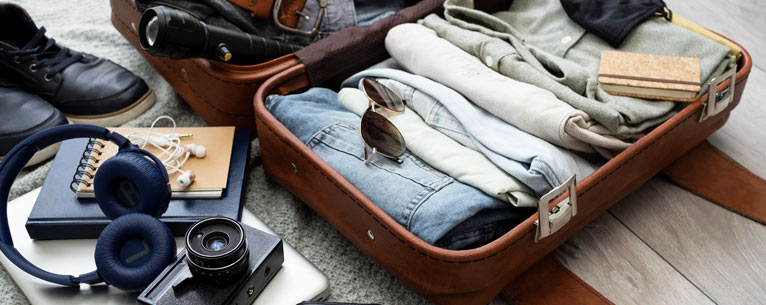
Planning a successful Northern Lights trip means thinking beyond just photography. Here’s what to keep in mind
Choosing the Right Location
- Stay in remote areas away from city lights for dark skies
- Consider destinations inside or near the Auroral Oval, like Norway, Finland, Sweden, Iceland, Russia, Canada, or Alaska
- Glass igloos, remote lodges, or Arctic cabins offer immersive experiences
Dressing for Arctic Weather
- Thermal base layers
- Insulated waterproof jackets
- Wool socks and gloves
- Waterproof snow boots
- Hand and foot warmers for extended outdoor comfort
Planning and Patience
- Stay for multiple nights – increases your chances of seeing the auroras
- Be flexible – auroras are unpredictable and can occur late at night
- Check forecasts regularly for both weather and aurora activity
- Be ready to wait – bring snacks, hot drinks, and a positive attitude
Camera Settings for Aurora Photography (DSLR/Mirrorless)
- ISO: Set between 800 and 3200 (higher ISO captures more light)
- Shutter Speed: 10–25 seconds (longer exposure captures more movement)
- Aperture: Wide open (f/2.8 or lower preferred)
- Focus: Manual focus, set to infinity
- White Balance: Try auto first, then adjust if needed (around 3500K often works well)
Smartphone Photography (with Pro/Night Mode)
- Use Pro or Night Mode (if your phone has one)
- ISO: Between 800 and 1600
- Shutter Speed: 10–20 seconds
- Focus: Manual, set to infinity
- Stabilization: Use a tripod or a steady surface to avoid blur
- Additional Tips:
- Use a timer or a remote shutter to prevent camera shake
- Try third-party camera apps for more manual control (e.g., Halide, ProCamera)
- Use a timer or a remote shutter to prevent camera shake
Essential Photography Gear
- Tripod: To keep your camera steady for long exposures
- Remote Shutter Release: Prevents camera shake
- Wide-Angle Lens: Captures more of the night sky
- Extra Batteries: Cold weather drains them quickly
- Headlamp with Red Light: Preserves night vision while adjusting settings
- Lens Cloth: To clean off frost or condensation
Expert Tips for Better Photos
- Avoid using flash – it won’t help capture auroras
- Include foreground elements – snowy trees, cabins, or mountains for context
- Experiment with shutter speeds – different durations yield different effects
- Stay out longer – auroras change rapidly, so be ready for sudden intensity
- Practice beforehand – familiarize yourself with night settings before your trip
Best Aurora Forecasting Tools
- Aurora Forecast (iOS & Android)
- My Aurora Forecast & Alerts
- NOAA Space Weather Prediction Center
- Look for Kp Index 4 or higher for good viewing chances
Book Your Aurora Borealis Trip Now!
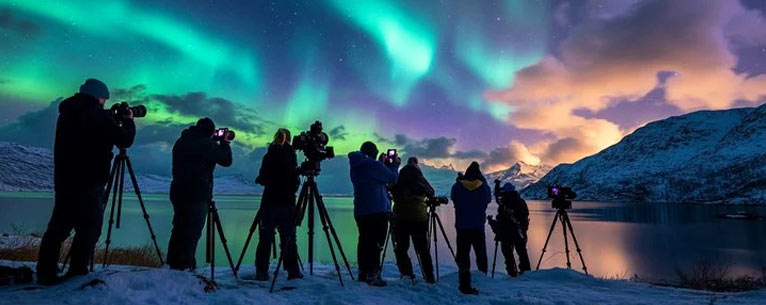
The Aurora Borealis is one of nature’s most stunning spectacles, offering a breathtaking experience that every traveler should witness at least once. Whether you choose Norway, Iceland, Sweden, Canada, or Alaska, each destination offers a unique and magical setting to enjoy the lights.
To make the most of your trip, plan, check the forecasts, and stay for multiple nights to increase your chances of seeing this extraordinary display.
Don’t miss out on this once-in-a-lifetime adventure. Start planning your dream Aurora Borealis trip today!
Call us at +91 33 40525777 / +91 833 697 8737
Email us at [email protected]